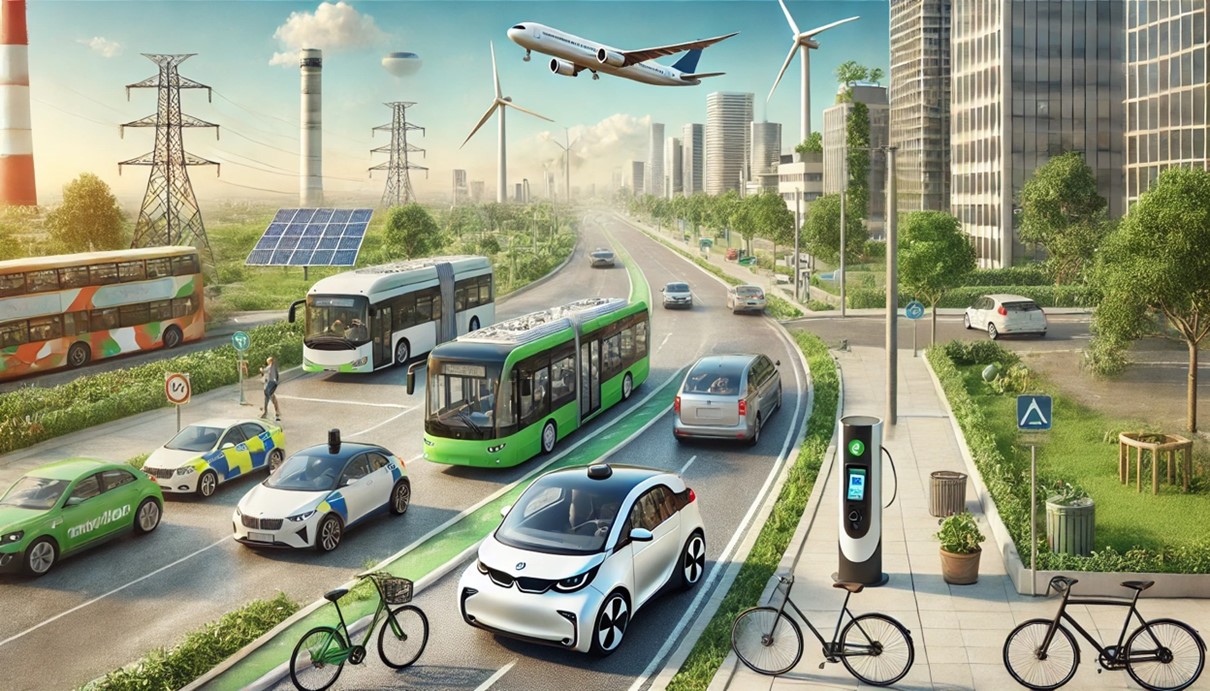Mitigating Transport's Environmental Impact Through Alternative Energy and Regulatory Measures
15/06/2024, Poznan University of Technology, Poland
Transport is responsible for about a quarter of the EU’s total greenhouse gas emissions, significantly contributing to air pollution, noise pollution, and habitat fragmentation. This sector's emissions, which account for 26% of global CO2 emissions, are a major driver of global warming and climate change. The surge in cargo transport and the number of vehicles has exacerbated these impacts, leading to increased operational pollution, breakdowns, and illegal activities.
Emissions from vehicles primarily stem from land transport, with road transport being a significant concern. Land transport alone accounts for approximately 30% of the CO2 emissions from all transport modes. Pollution from transport is often the result of unforeseen events, which, although rare, can have significant environmental impacts. In water transport, fuel leaks, fires, cargo loss, and ship collisions are common accidents. For land transport, accidents typically involve other vehicles, people, animals, or fuel loss. Air transport, though it has the greatest consequences when failures occur, experiences such incidents less frequently compared to other transport modes. Illegal activities in this sector mainly involve non-compliance with exhaust emission standards. Among all transport modes, land transport contributes the most to environmental pollution, emitting toxic compounds that contaminate water, air, and soil.

Efforts to mitigate these environmental impacts focus on alternative energy sources. Renewable electricity, biofuels, hydrogen, and synthetic or paraffin fuels are gaining attention. Renewable electricity, including solar, wind, and hydropower, provides an inexhaustible and environmentally friendly energy source. Solar energy harnesses sunlight via photovoltaic panels, wind energy is captured by wind turbines and stored in batteries, and hydropower is generated through dams. Biofuels like bio-LPG, produced from waste and vegetable oils, are increasingly used in heavy road transport to reduce harmful emissions. Vehicles powered by biogas emit significantly less CO2 than traditional combustion engines. By 2022, wind farms produced 54% of renewable electricity, while solar and biogas accounted for 40%, and hydropower for 6%.
Hydrogen is emerging as a promising alternative to conventional fuels, with the potential to revolutionize the transport industry. Hydrogen-powered vehicles, whether using traditional combustion engines or fuel cells, produce only water vapor as emissions. However, the environmental impact of hydrogen production varies depending on the technology used. Synthetic and paraffin fuels, derived from natural gas, coal, biomass, and plastics, are also being explored as alternatives, though their production is currently more energy-intensive and costly compared to fossil fuels.
Electromobility represents a significant step towards reducing pollutant emissions. Electric vehicles (EVs) offer a zero-emission alternative to conventional vehicles, particularly beneficial in urban areas with high traffic and population density. Despite their environmental advantages, EVs face challenges such as high purchase costs, limited infrastructure, short range, and battery disposal issues. The environmental impact of EVs also depends on the energy source used for charging; renewable energy sources are preferable to fossil fuels.
Autonomous vehicles (AVs) are another technological advancement aimed at reducing emissions and fuel consumption. AVs are expected to significantly reduce CO2 emissions and fuel use, contributing to a downward trend in pollution. Features like eco-driving and vehicle platooning enhance efficiency and further reduce emissions.
The EU has implemented regulations to curb transport emissionsparticularly targeting new heavy vehicles. Starting in 2025, stricter emission standards will be applied to newly registered vehicles, aiming to reduce emissions by 15%. By 2030, emissions from trucks are to be reduced by 31%, and from passenger cars by 37.5%. These regulatory measures are part of a broader effort to mitigate the environmental impact of transport and promote sustainable mobility solutions.
In summary, while transport significantly contributes to greenhouse gas emissions and environmental pollution, ongoing efforts to adopt alternative energy sources, electric and autonomous vehicles, and stringent regulatory measures hold promise for a more sustainable and eco-friendly transport sector.


